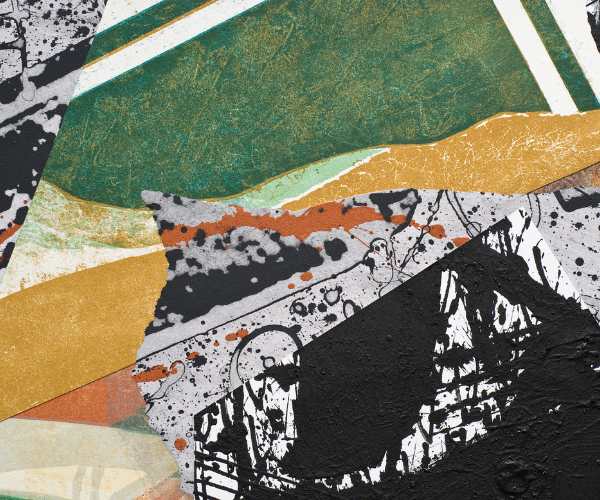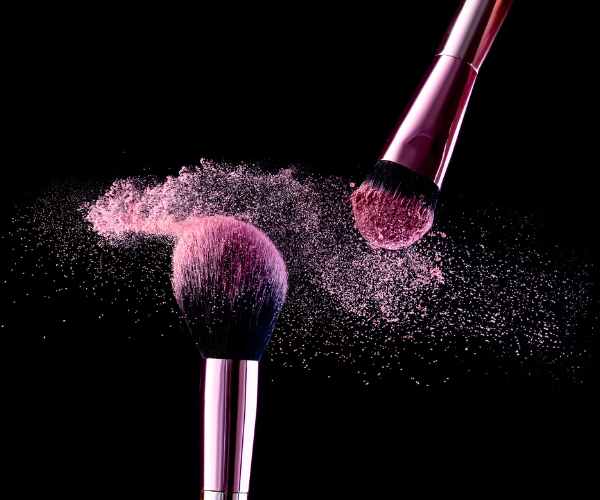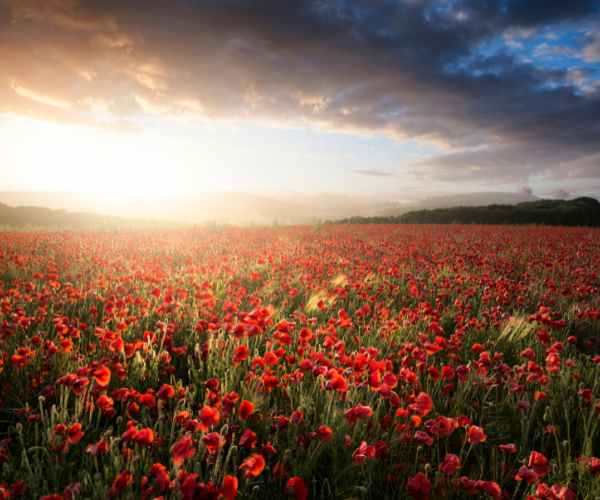It was almost two years ago, when I made up my mind to try printing one of my digital paintings for the first time. I literally spent hours working on several aspects of my painting: the colours, textures, and even brush strokes. So, as soon as I completed all the modifications and pressed “print”, I was all ready to be surprised, only to be met with a blurry, pixelated mess. As I watched my hard work manifest in such an incorrect form, I was even left feeling devastated at this very moment.
This specific experience, however, helped me understand something very crucial in the 3D realm- resolution and DPI (dots per inch) which admittedly does sound a little bit technical in nature yet is highly essential for any digital artist to be well versed with.
Simply put, resolution defines detail or an image’s capacity when it comes to pixel density and print resolution (DPI) is the measure of how many dots of ink are printed in an inch of your art piece. Imagine DPI as the link that changes your imaging from in a digital format to the actual world, as it determines how pixelated or clear your print out will be.

If you’re a digital artist and you want to succeed, then understanding these concepts is vital if you want your art to look good in print as well as digital formats. Setting everything up properly makes a huge difference, making sure that your art will be able to remain intact no matter the display or the place.
This post aims to simplify these concepts and clear up how the relation between resolution and DPI works so that you can make amazing digital art without any fear. So without any further ado, let’s get into the specifics of resolution and explore how it has an impact on what you create!
What is Resolution in Digital Art?
In our present discussion about resolution, it is appropriate to define it as the ability of an image to render the amount of detail that is physically present in it. Images are often color-coded in terms of their resolution, and in most modern cases it is referred to in terms of pixels. An artwork, for example, can be rendered at a resolution of 1920 x 1080 pixels. This translates to your picture comprising 1,920 pixels horizontally and 1,080 pixels vertically.
Now, you might ask how this is different from pixel dimensions. Well, the main distinguishing factor is that pixel dimensions are an aspect of individual parts of your image, while resolution more often than not delves into the quality of detail that such pixels afford to the image upon display or printing. A high resolution indicates a sharper image and more detail because it contains more pixels in a given space.
This brings us to perhaps one of the real life scenarios where one can see how resolution has an effect on the quality of the picture.
Let’s say you make a stunning graphic that you plan on sharing on socials. The size you set the canvas to is 1080 x 1080 px which works great for Instagram. But now you get told by your friend to get this piece printed for a local art display, and that’s when you remember it’s only saved in 72 DPI resolution. When you go to print it out, it appears pixelated , and lacks the clarity that you were imagining. If only you had produced the piece in at least 300 DPI then you would have at least received a clearer picture.
In the world of digital artwork, high quality resolutions matter a lot while creating graphic paintings for prints, in most cases achieving the desired high end result requires you to use at least 300 DPI. But for other mediums such as social media, where the graphic is being displayed on a screen rather being printed out, a dip in the quality, let’s say 72 DPI, is forgotten about.
The implications that come with resolution, as you can see, are quite more complex than just being numbers. It does influence how your artwork looks, which is why how you intend to make it look should be taken into consideration when determining the resolution.
The Relevance of Resolution for Artists of the Digital Era
To put it another way, resolution is also a generic term that includes a wide range of issues in the art industry. The moment you zoom into your painting and it appears pixelated, or you want to print your work, your resolution becomes more of a concern, aside from being merely a tech parameter. This is because of the sharpness that higher resolution offers. The crisper the image, the more detail can be captured.
I was trying to recall the time when I was putting together a set of illustrations for the cover of a book. I created a surreal landscape image that required a lot of colors and textures. When I was finished with the image, I thought that I could close it now. To my disappointment, it wasn’t enough to submit to a gallery in an exhibition. Eventually, I learned that it’s always best to assume your art has the potential to go beyond its intended purpose.
CLICKS DESIGNS Resoluption can often get deeply confusing, especially when creating artwork for various purposes. In this broad realm, here are a few tips that may assist you:
- For Digital Displays – Aiming for over 72 DPI is an ideal figure when creating art aimed to be used primarily online. This guarantee saves up file space as well as ensures a more professional touch is being put on the art piece.
- For Prints – Creating the artwork on a 300 DPI guarantees that all of the minute details within that piece are retained when reproducing the artwork on paper. Yes, the file space does take a hit, but in the case of prints, its worth, making the switch.
- Give It A Try: Do not stress yourself too much when working on the animation, try looking for spaces where you can change resolutions and work with different numbers. This will provide you with insight on how the changes made in resolution will affect the overall piece in hand.
- Consider The Size – Some pieces of art do require a certain size to carry, and in this case, your DPI will need a change as well. For an instance if you’re working with post cards, a 300 DPI will do, but for bigger dimensions such as canvas prints, you will need to work with a higher DPI.
Understanding these pieces of knowledge can really bring you a long way, and along with understanding how the physical world perceives art, will also provide a glimpse into how the digital world views art.
What is DPI (Dots Per Inch)?
Let’s revise a little. DPI stands for dots per inch, and we are worried about the resolution of the picture when it is printed.
So, what exactly does DPI mean? It is the metric used in the graphic scene to indicate the amount of ink dots perpetrated by a printer within an image size of one square inch. More dots translated to a higher DPI which translates to better details in the print. This is super important for digital artists because, let’s face it, we want our artwork to shine in the physical world, right?
Now, here’s where it can get a bit confusing: DPI is often mixed up with PPI, or pixels per inch. While both are crucial, they serve different purposes.
This is specific to printing and represents the number of dots in a one inch dot image.
PPI, on the other hand, refers to the resolution of your digital image—how many pixels are packed into one inch of your screen or canvas.
To keep it short, think of DPI as the amount of translation ink that has been used for a print and PPI as the number of pixels that generates your digital piece of art.
While preparing your artwork for printing, it’s beneficial to be aware of the industry’s standard Dots Per Inch (DPI) settings associated with each print medium. A professional-grade photograph for example, would usually require a DPI of 300. For posters, a DPI of 150 would suffice as they are more often than not, viewed from a distance.
Understanding these differences, assists you in amending various settings for your project, and optimizing the outcome.
Impact of DPI on Images
Let’s break it down: DPI is directly proportional to image quality in regards to print. The larger the DPI value, the more clarity detail your artwork will have on paper. Essentially the greater the DPI value, the more dots of ink can be produced in the one inch area resulting in even greater gradients and detail.
The worst experience of my life was the moment when I forgot to check the DPI for my print. Let me explain what went wrong, It was during a gallery exhibition where I was supposed to showcase a piece of artwork that I had spent effort and hours on. However, for some unexplainable reason I made the blunder which costed me the final product. I remember being frustrated in the moment when I realized that all my work was wasted just because I did not change the DPI to the recommended one. To sum it up, It was a printing disaster where the painting was entirely pixelated.
If you want to avoid feeling this disheartened, here are some tips on how to conduct DPI for projects
- Select Appropriate DPI to Avoid Frustration: If you consider a wall that has an artwork displayed, the mean DPI for such an artwork should be above 300 at a minimum. On the other hand, If you have a banner or a poster, 150 DPI sufficient for such prints. Always remember to consider where your artwork will be displayed.
- Size Matters: While deciding on the dimensions of your artwork please note that larger pieces have differing DPI requirements since they need a higher resolution and better quality. Hence if you are planning to upscale a piece, you must start off with a file whose resolution is high.
- Test Prints: If at any time you are not too sure, we recommend you do a test print! Reducing the dimensions of the artwork while adjusting the DPI will help determine the best settings for it.
DPI helps avoid any discrepancies in your artwork and makes sure that your prints display your digital art in its lasting beauty and intricate details.
FAQs
What do you think is the most suitable resolution for an artwork and why?
The resolution or the quality of the image greatly depends on the size, medium and method you are going to be using for your artwork.
For example, if you are designing something with the intent of printing then it is advisable to keep it on 300DPI or higher. This will give you the depth and clarity needed during printing. However, if you are designing a piece that would only be displayed on social media or a website, 72 DPI would suffice.
When selecting a resolution note that it is important to carefully assess the medium of output. Are you going to print it out on a canvas, or is it just for a digital gallery? Are you going to use it in large form as well? A lower DPI can be used for small prints, but larger banners will have to be at a greater quality for it to be ideal.
I recall designing a collection of graphics for a children’s picture book some years ago. At first, I assumed that a too low resolution was intended only for an ebook version. However, once the publisher decided to include the book in print, I had to do everything all over again. The whole illustration process had to be altered by me at a higher resolution in a short time. It was a timely learning experience in terms of planning such events well in advance!
DPI of any image is one of the common factors in electronic art. How does DPI affect digital art?
DPI determines how many dots will fit into an inch. By how much the amount of dots changed, the resulting picture changed proportionally to the amount of ink that was poured into it.
Let’s say, for instance, you print an image at three hundred DPI, you’ll probably realize that the details pop out more, the colors blend in evenly, and the entire look looks way more professional. In contrast, when you print with a lower DPI, say, for example, seventy-two DPI, you might get left with a blurry or pixelated image which is quite disappointing especially after you have worked so hard on the artwork.
Remember when I made a noise when I said that there are a few key components that would typically alter the quality of the print?
I remember making a huge parade poster for an art exhibit and while it was a proud display of my work, I washed my hands of it after sending it to the printer when it’s the flip side when it first comes out of the printer. It was grainy, to the least. It was a harsh lesson as to how important DPI is to print.
Is it possible to change DPI after you have created a piece of artwork?
So, the quick answer to this is – Yes, you can change the DPI but only after the artwork is made, or else it would usually not be that simple and straightforward, rather, it would be complicated. Increasing the DPI of a low-resolution image does not make it any better and instead it would most probably just stretch the Dots Per Inch which could even worsen the image.
You should ideally set your preferred DPI at the start of the design process. In case you did not set it beforehand, you should prefer to revise the artwork file instead of changing the dpi on your saved design. If you can’t do that, then redoing your artwork to a higher resolution is the best option for maximum quality.
What resolution is needed for web vs. print?
Web and print have different resolution needs and standards. For online images, it is relatively common to set the DPI to 72. This relatively lower DPI is ideal since screens are not as detailed compared to print.
A DPI set at 300 is the gist I would advise you while printing anything. This high DPI helps in maintaining the original quality of your artwork while printing thus allowing for rich colors and excellent detail. I’ve learned this difference the hard way, especially when transitioning my artwork from being a digital piece to a printable piece, but these standards definitely help when finalizing a product.
What can be done to make sure that my artwork appears appealing when viewed in different dimensions?
Assuming you want to create artwork that looks good even at very large sizes, assume take time and design the artwork at a higher resolution. This way, if you ever need to scale the artwork down to fit a purpose, the quality of the artwork will be well preserved.
Additionally, don’t forget to utilize vector graphic design as much as you can to create scalable art. Vector graphics, unlike raster images, can be stretched without compromising quality. This is due to their use of mathematical equations rather than pixels.
On the other hand, try to keep the original files as large as feasible if you wish to employ raster images. For instance, I like to save my drawings in high resolution and then shrink them down for social media. This small tip ensures that my artwork always has the highest possible quality, regardless of where it is exhibited.
Final Thoughts
In conclusion, I believe that for any digital artist aiming to produce great work, grasping the concepts of resolution and DPI is critical.
Do keep in mind that resolution pertains to the amount of detail and how sharp your images will be, while DPI specifies how your images will be rendered when printed.
For your next art project, I suggest you change your resolution settings, I want to encourage you not to shy away from what is best suited for your style and medium.
Please, I am keen on hearing more about your experience! Did you ever struggle with DPI or resolution? What advice would you give to artists in search of solutions on this aspect of digital art? Comment below!






